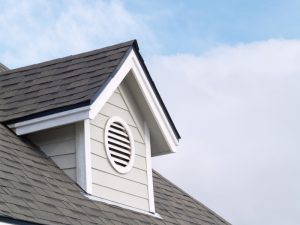The term attic fan sometimes triggers confusion in people. Why have a fan in the attic? People don’t spend much time up there unless a conversion turned it into a bedroom.
But attic fans serve several important functions for a house, and we strongly recommend locals consider having attic fan installation. We offer this service, as well as other electrical work to keep attic fans performing their useful jobs.
Below, we’ll look at what an attic fan does and how it prevents climate issues and mold growth in a house.
The Basic Job of Attic Fans
We also refer to these fans as attic exhaust fans, and this gives a better idea of their function. An attic fan doesn’t circulate air around a space the way standard ceiling fans or standing fans do. They instead ventilate the attic, drawing the attic air to the outside using electrically powered blowers.
This creates an equalizing effect, lowering the interior temperature of an attic to balance it with the outside air. An attic fan doesn’t consume a large amount of electricity, far less than using an air conditioning system.
Handling Extreme Temperatures
If you’ve ever ascended into your home’s attic on a warm, bright summer day, you’ll discover just how roasting it can get up. The radiant energy from the sun on the roof can elevate temperatures to 130°F. This heat won’t stay in the attic, even with quality attic insulation (necessary for many reasons).
This massive heat sink at the peak of the house will spread to other places and raise the temperature. The air conditioning system now has another source of heat pushing into the house that it has to cool down. Attic heat means less comfort and higher electric bills.
An attic fan cost-effectively solves this problem. Without using a refrigerant-based cooling system, it pushes out the super-heated air from the attic to the outside. It lowers the temperature to the point where the attic insulation will keep the heat trapped at the top of the house and not interfering elsewhere. You can expect an 8° difference on hot days in the rest of the house thanks to an attic fan.
Battling Moisture, Mold, and Roof Damage
Moisture in your home from cooking, bathing, showering, and general humidity rises to the attic. A humid attic attracts the growth of mold. Mold not only smells bad and can lower indoor air quality, but it can also devastate building materials, the roof in particular. Many roofs have had their lifespans shortened significantly because of the wood rot and mold of moisture.
An attic fan has this trouble taken care of as well. It vents the humid air to the outside along with the heat. This makes an attic fan useful in winter as well because moisture will still rise to the attic in winter (and it might freeze in the roof, which also damages it).
Call the Professionals
You must have licensed electricians install an attic fan for your house. Contact our team today and they’ll get to work. Since 1997, we’ve specialized in creating and designing home comfort solutions that guarantee greater efficiency and customer satisfaction.
JN Electrical Temperature Control, Inc works hard to ensure customer satisfaction with custom comfort solutions. Reach out to us for attic fan service.


